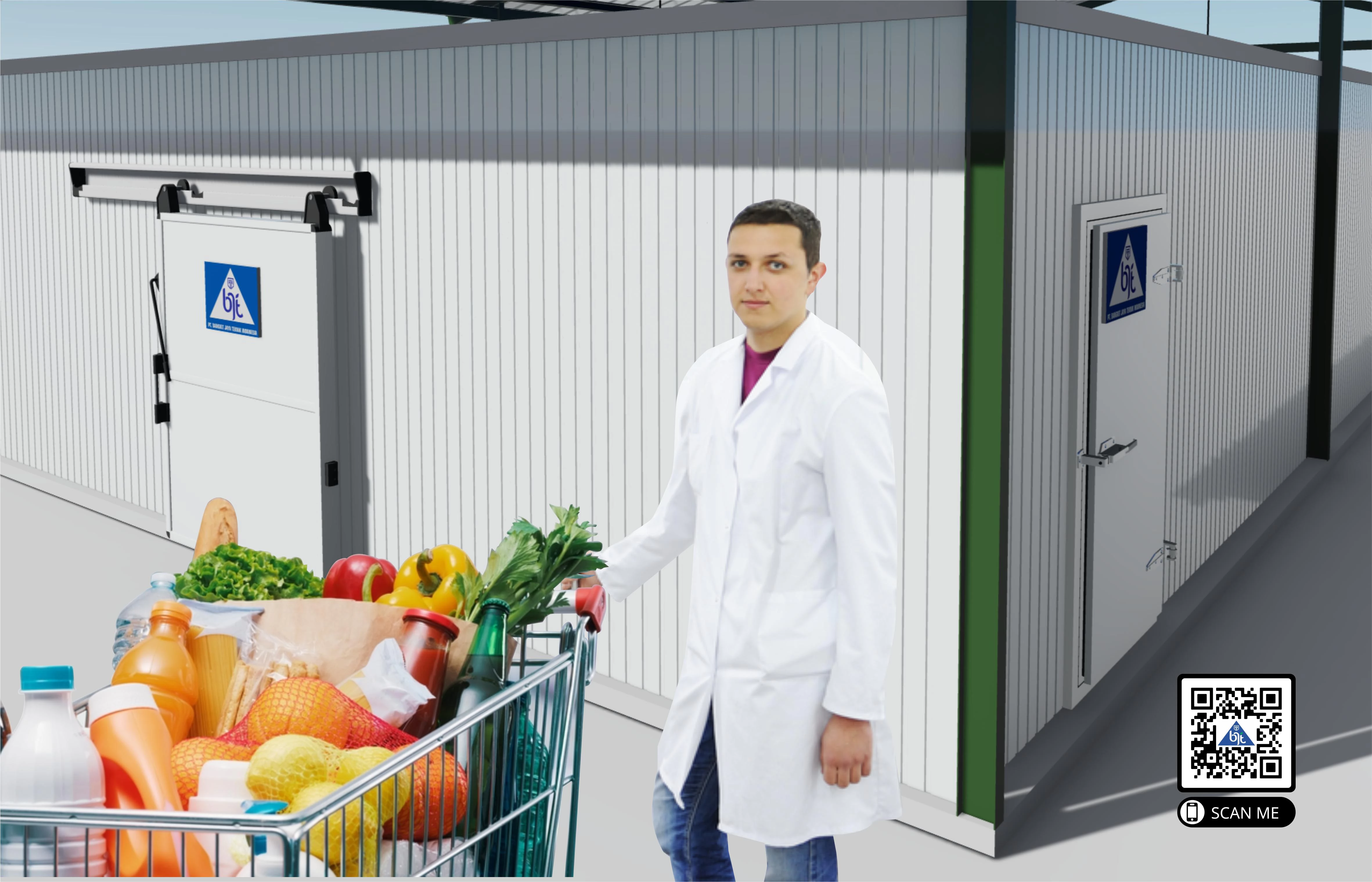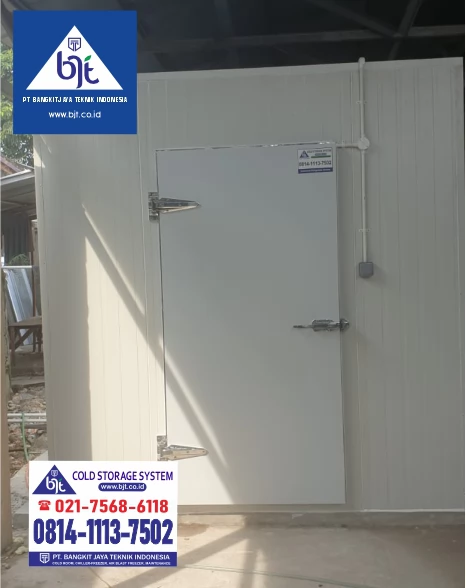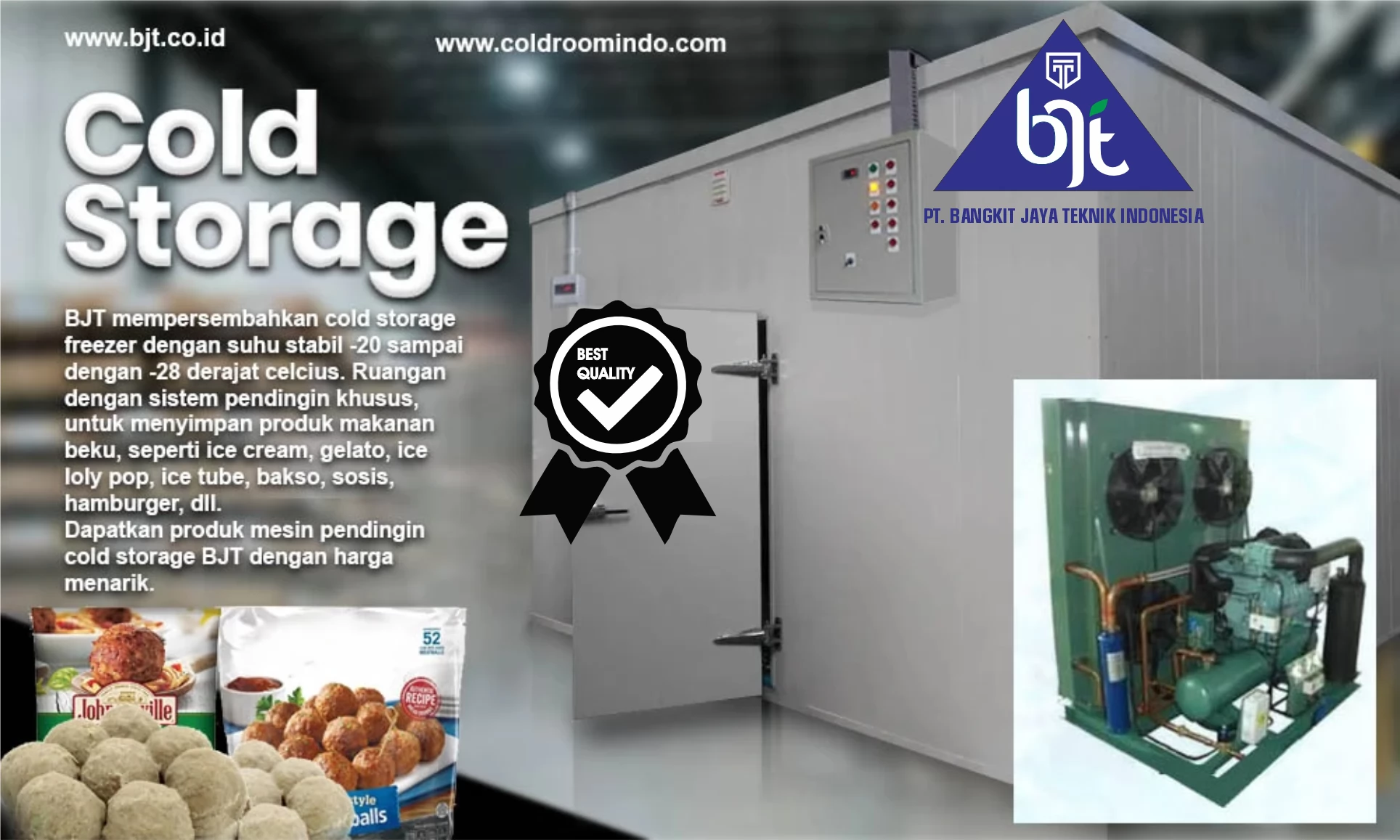The correct way to store frozen food in a commercial freezer. The key points of the article are maintaining the freezer temperature below 0 degrees Celsius to prevent spoilage and product damage. Additionally, frozen foods need to be separated by type and tightly packed using appropriate containers. The FIFO (First In, First Out) stock rotation system is also crucial to ensure that older products are used first. Refreezing thawed food is discouraged, and regular checks of the freezer's condition are recommended to maintain consistent temperature. By following these steps, you can preserve the quality and safety of frozen food in a commercial freezer.
How to Properly Store Frozen Food in a Commercial Freezer
When it comes to operating a successful restaurant or food service business, properly storing your frozen food is critical. A commercial freezer is an essential piece of equipment for any business that needs to keep perishable items, like meat, poultry, and vegetables, fresh for long periods. In this article, we'll discuss the best practices for storing frozen food in a commercial freezer to ensure food safety and quality.This articles provides useful tips for properly storing frozen food in a commercial freezer to ensure food safety and quality. It emphasizes the importance of organizing the freezer space, using the right containers, freezing food quickly, checking the temperature regularly, keeping the freezer clean, using a first-in, first-out (FIFO) system, avoiding overfilling and cross-contamination, thawing food safely, and keeping a record. By following these best practices, businesses can maintain the freshness and quality of their frozen food and prevent waste and foodborne illnesses.
 Properly storing frozen food is essential to maintain its quality and prevent foodborne illnesses. Whether you’re using a commercial freezer or a home freezer, here are some guidelines to follow:
Properly storing frozen food is essential to maintain its quality and prevent foodborne illnesses. Whether you’re using a commercial freezer or a home freezer, here are some guidelines to follow:
-
Temperature Control:
- Refrigerator: Keep the refrigerator temperature at or below 40°F (4°C).
- Freezer: Maintain the freezer temperature at 0°F (-18°C).
- Use appliance thermometers to monitor these temperatures periodically 1.
-
Storage Basics:
- Refrigerate or freeze perishables promptly after purchase.
- Follow the “two-hour rule”: Don’t leave items needing refrigeration out at room temperature for more than two hours (one hour if the air temperature is above 90°F).
- Avoid overcrowding the refrigerator or freezer to allow proper air circulation.
- Label packages and use airtight containers to prevent freezer burn and food spoilage 12.
-
Ready-to-Eat Foods:
- Consume refrigerated ready-to-eat foods (like luncheon meats) promptly.
- Listeria, a bacterium causing foodborne illness, can grow in refrigerated foods if stored for too long, especially if the temperature exceeds 40°F 1.
-
Spoilage and Safety:
- Be alert for spoiled food. Mold is a sign of spoilage, even under refrigeration.
- Discard anything that looks, smells, or tastes suspicious.
- Remember that foodborne illnesses are caused by pathogenic bacteria, which differ from spoilage bacteria. Proper chilling slows bacterial growth 1.
-
Additional Tips:
- Make sure frozen food remains hard-frozen.
- Check food packaging for damage.
- Avoid storing food in warm, humid areas or direct sunlight.
- Keep food, containers, and packaging off the ground and away from chemicals 3.
Remember, safe food storage practices help prevent illness and maintain food quality. If you have any more questions, feel free to ask! 🌡️🧊 132
 PT. BANGKIT JAYA TEKNIK INDONESIA (BJT) is a prominent manufacturer and producer of cold storage systems, commercial freezer in Indonesia. They specialize in the production of chillers and freezers capable of maintaining precise temperature control. With a cooling storage capacity of up to 200 tons, PT. BJT offers a comprehensive range of cold storage solutions to cater to the diverse needs of their clients.
PT. BANGKIT JAYA TEKNIK INDONESIA (BJT) is a prominent manufacturer and producer of cold storage systems, commercial freezer in Indonesia. They specialize in the production of chillers and freezers capable of maintaining precise temperature control. With a cooling storage capacity of up to 200 tons, PT. BJT offers a comprehensive range of cold storage solutions to cater to the diverse needs of their clients.
One of the key advantages of PT. BJT is their commitment to providing the best price and quality in the market. They understand the importance of cost-effectiveness without compromising on the quality and performance of their products. By leveraging their expertise and adopting efficient manufacturing processes, they are able to offer competitive prices for their cold storage systems while ensuring exceptional quality.
PT. BJT's cold storage systems are built to meet the highest industry standards and undergo rigorous quality control measures. They utilize advanced technologies and employ skilled professionals to ensure the reliability, durability, and efficiency of their products. Whether it's for food storage, pharmaceuticals, or other temperature-sensitive goods, PT. BJT's cold storage systems are designed to deliver optimal performance and preserve the integrity of the stored items.
Furthermore, PT. BJT understands the importance of customization to meet the unique requirements of their clients. They offer flexible solutions that can be tailored to specific storage needs, ensuring maximum efficiency and utilization of space. Their team of experts works closely with clients to assess their requirements and provide personalized recommendations, resulting in bespoke cold storage systems that perfectly align with their business operations.
In addition to their manufacturing capabilities, PT. BJT also offers comprehensive after-sales services, including installation, maintenance, and technical support. Their dedicated team of professionals ensures a seamless experience for their clients, guaranteeing the smooth operation and longevity of the cold storage systems.
In summary, PT. BANGKIT JAYA TEKNIK INDONESIA (BJT) is a leading manufacturer and producer of cold storage systems in Indonesia. With their extensive product range, competitive pricing, and commitment to quality, they have established themselves as a trusted provider of cold storage solutions. Whether it's for small-scale or large-scale storage needs, PT. BJT's cold storage systems offer the perfect combination of price, quality, and customization to meet the diverse requirements of businesses in Indonesia.
 1. Organize Your Freezer Space
1. Organize Your Freezer Space
The first step in proper frozen food storage is to organize your freezer space. Group similar items together and label everything to make it easy to find what you need. This will help you avoid having to dig through your freezer to find what you're looking for, which can lead to food waste and spoilage.
2. Use the Right Containers
Using the right containers to store your frozen food is essential. Plastic containers or bags that are specifically designed for freezing are a good choice. These containers are made to withstand low temperatures and protect your food from freezer burn.
3. Freeze Food Quickly
To ensure the best quality of your frozen food, it's essential to freeze it as quickly as possible. Rapid freezing helps prevent the formation of ice crystals, which can damage the texture and flavor of your food. Be sure to keep your freezer at the correct temperature to ensure rapid freezing.
4. Check the Temperature Regularly
Regularly checking the temperature of your freezer is crucial to maintaining the quality of your frozen food. The temperature should be kept between -18°C and -23°C. Any warmer, and your food may start to spoil, while any colder may cause freezer burn.
5. Keep Your Freezer Clean
Keeping your freezer clean is essential for preventing the growth of harmful bacteria and maintaining the quality of your frozen food. Regularly clean your freezer with warm soapy water, and be sure to wipe up any spills or leaks immediately.
6. Use a First-in, First-out (FIFO) System
A first-in, first-out (FIFO) system is an essential part of proper frozen food storage. This system ensures that the oldest food is used first, reducing waste and preventing spoilage. Label your containers with the date they were frozen and use the oldest items first.
7. Don't Overfill Your Freezer
Overfilling your freezer can lead to inefficient cooling and can damage the quality of your frozen food. Be sure to leave enough space for air to circulate, which will help keep your freezer at the correct temperature.
8. Avoid Cross-Contamination
Cross-contamination can occur when raw meat, poultry, or seafood come into contact with other foods in your freezer. This can lead to the spread of harmful bacteria and foodborne illnesses. Be sure to store these items in sealed containers and separate them from other foods.
9. Thaw Food Safely
When it's time to use your frozen food, it's essential to thaw it safely. The best way to do this is to move the container from the freezer to the fridge and let it thaw slowly. Avoid thawing food at room temperature or in warm water, as this can lead to bacterial growth.
10. Keep a Record
 Finally, it's essential to keep a record of the food you store in your freezer. This can help you keep track of expiration dates and ensure that you're using the oldest items first. A simple spreadsheet or inventory system can make this task easy and efficient.
Finally, it's essential to keep a record of the food you store in your freezer. This can help you keep track of expiration dates and ensure that you're using the oldest items first. A simple spreadsheet or inventory system can make this task easy and efficient.
Cara Menyimpan Makanan Beku dengan Benar dalam Cold Storage Komersial
Menyimpan makanan beku dengan benar dalam cold storage komersial adalah penting untuk menjaga kualitas dan keamanan produk. Berikut adalah langkah-langkah penting yang harus Anda ikuti:
-
Kemas dengan Rapat: Pastikan makanan yang akan disimpan dalam cold storage dibungkus dengan rapat dan tahan air. Gunakan wadah plastik atau kantong plastik khusus freezer yang sesuai. Pastikan tidak ada udara yang terperangkap di dalam bungkusan, karena ini dapat menyebabkan pembentukan kristal es yang merusak tekstur makanan.
-
Tandai dan Label: Selalu tandai makanan dengan label yang mencantumkan tanggal penyimpanan dan deskripsi makanan. Ini membantu Anda mengidentifikasi makanan dengan mudah dan menghindari makanan yang sudah kedaluwarsa. Pastikan juga untuk mencantumkan jumlah makanan yang disimpan.
-
Susun dengan Rapi: Susun makanan dengan rapi dalam cold storage. Hindari menumpuk makanan terlalu tinggi atau terlalu padat, sehingga udara dingin dapat mengalir secara efisien di sekitar makanan. Jaga agar ada ruang antara makanan untuk menghindari penumpukan yang tidak perlu.
-
Jaga Suhu yang Sesuai: Pastikan cold storage Anda selalu beroperasi pada suhu yang sangat rendah, biasanya di bawah -18 derajat Celsius. Suhu yang rendah ini akan menjaga makanan tetap beku dengan baik dan mencegah pertumbuhan bakteri yang berbahaya.
-
Batasi Waktu Penyimpanan: Meskipun cold storage dapat menjaga makanan dalam kondisi beku untuk waktu yang lama, batasi waktu penyimpanan sesuai dengan rekomendasi produsen dan pedoman keamanan pangan. Beberapa makanan mungkin tidak akan memiliki kualitas yang sama jika disimpan terlalu lama.
-
Hindari Pencairan yang Tidak Perlu: Ketika mengambil makanan dari cold storage, pastikan hanya mengeluarkan makanan yang akan digunakan. Jangan biarkan makanan dibiarkan terlalu lama di luar cold storage, karena suhu yang lebih tinggi dapat menyebabkan pencairan yang tidak diinginkan.
Dengan mengikuti langkah-langkah ini, Anda dapat memastikan makanan beku Anda tetap segar, aman, dan sesuai dengan standar keamanan pangan. Ini juga akan membantu menghindari pemborosan makanan dan memaksimalkan manfaat dari cold storage komersial Anda.
Menjaga Kualitas dan Keamanan: Panduan Penyimpanan Makanan Beku di Freezer Komersial
Industri makanan dan minuman (F&B) mengandalkan freezer komersial untuk menyimpan berbagai produk beku, mulai dari daging, ikan, sayuran, hingga makanan olahan. Namun, penyimpanan yang tidak tepat di freezer komersial dapat berdampak buruk pada kualitas dan keamanan pangan. Artikel ini akan membahas panduan praktis untuk menyimpan makanan beku dengan benar di lingkungan freezer komersial.
Mengoptimalkan Suhu Freezer Komersial:
- Suhu Ideal: Suhu ideal untuk freezer komersial adalah -18°C (-0.4°F). Suhu ini cukup dingin untuk menghentikan pertumbuhan bakteri berbahaya yang dapat menyebabkan penyakit bawaan makanan.
- Monitoring Suhu: Pastikan suhu freezer komersial Anda dimonitor secara teratur menggunakan termometer yang akurat. Lakukan pencatatan suhu secara berkala untuk memastikan konsistensinya.
- Penempatan Makanan Beku: Hindari membuka pintu freezer komersial terlalu sering. Saat menempatkan makanan beku baru, susunlah di rak terbawah untuk memastikan terpapar suhu terdingin.
Pengemasan dan Pelabelan: Keamanan dan Identifikasi Mudah
- Kemasan Kedap Udara: Gunakan wadah penyimpanan makanan berkualitas baik yang kedap udara dan tahan beku. Hindari menggunakan wadah yang retak atau bocor, karena dapat menyebabkan kontaminasi silang dan mengurangi kualitas makanan.
- Pelabelan yang Jelas: Setiap wadah makanan beku harus diberi label dengan jelas. Label tersebut harus mencantumkan tanggal pembelian, tanggal kadaluarsa, dan jenis makanan. Hal ini memudahkan identifikasi produk dan memastikan rotasi stok yang tepat (FIFO - First In, First Out).
- Minimalisir Ruang Udara: Saat mengemas makanan beku, usahakan meminimalisir ruang udara di dalam wadah. Udara dapat menyebabkan freezer burn, yaitu kondisi dimana permukaan makanan mengering dan teksturnya berubah.
Rotasi Stok dan Penataan yang Efektif:
- Rotasi Stok (FIFO): Terapkan sistem First In, First Out (FIFO) untuk manajemen stok. Makanan beku yang masuk lebih dulu harus dikeluarkan terlebih dahulu. Hal ini mencegah produk melewati masa kadaluarsa dan mengurangi pemborosan.
- Penataan Optimal: Atur penataan makanan beku di dalam freezer komersial secara rapi dan teratur. Hindari penumpukan yang berlebihan untuk memastikan sirkulasi udara yang baik. Sirkulasi udara yang optimal menjaga suhu dingin tetap stabil dan mencegah pertumbuhan bakteri.
Praktik Kebersihan untuk Keamanan Pangan:
- Kebersihan Freezer Komersial: Jaga kebersihan freezer komersial Anda dengan melakukan pembersihan secara berkala. Gunakan larutan pembersih khusus yang aman untuk digunakan pada permukaan freezer.
- Cuci Tangan dan Peralatan: Sebelum dan sesudah menangani makanan beku di freezer komersial, pastikan mencuci tangan dan peralatan dengan sabun dan air mengalir.
- Peralatan Kebersihan: Sediakan peralatan kebersihan khusus untuk area freezer komersial, dan pisahkan dengan peralatan kebersihan untuk area lainnya.
Dengan mengikuti panduan ini, Anda dapat menjaga kualitas dan keamanan pangan produk beku yang disimpan di freezer komersial. Makanan beku yang disimpan dengan benar akan lebih awet, mempertahankan rasa dan tekstur aslinya, serta meminimalisir risiko keracunan makanan.
Tips Tambahan:
- Lindungi Makanan Beku dari Cahaya: Cahaya dapat mempercepat kerusakan makanan beku. Gunakan wadah opak atau tutup rapat wadah transparan untuk meminimalisir paparan cahaya.
- Cairkan Makanan Beku dengan Benar: Jangan mencairkan makanan beku pada suhu ruangan. Cairkan makanan beku di dalam kulkas, gunakan microwave dengan pengaturan defrost, atau rendam di dalam air dingin.
- Pelatihan Karyawan: Lakukan pelatihan kepada karyawan yang menangani makanan beku tentang praktik penyimpanan yang benar dan pentingnya keamanan pangan.
Dengan menerapkan praktik penyimpanan yang tepat di freezer komersial, Anda dapat berkontribusi terhadap keamanan pangan dan keberlanjutan lingkungan. Makanan yang terjaga kualitasnya akan mengurangi pemborosan dan meminimalisir limbah makanan.
How to Properly Store Frozen Food in a Commercial Freezer
